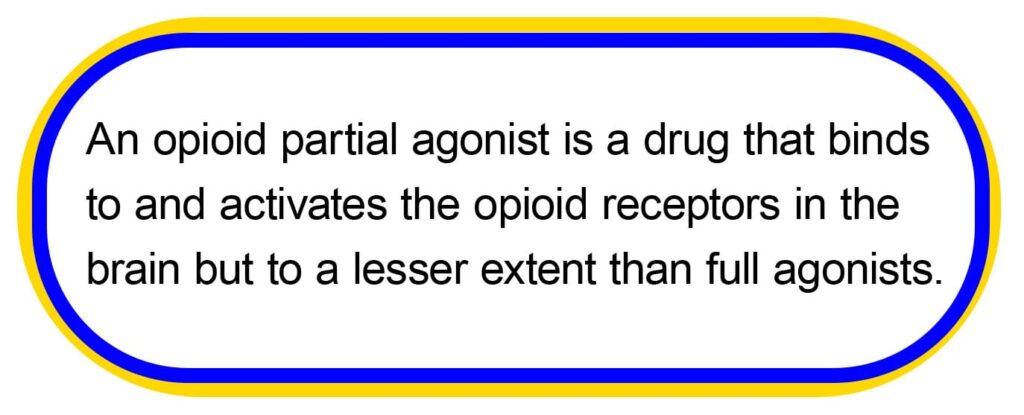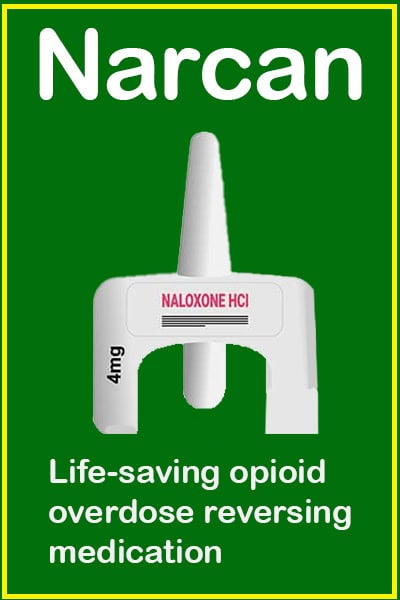Opioid Partial Agonists
Opioids, a class of drugs often associated with pain management, can be classified based on their mechanism of action. One such category is “opioid partial agonists.” This article provides a comprehensive understanding of opioid partial agonists, highlighting their unique properties, uses, and research about their efficacy.
What is an Opioid Partial Agonist?
An opioid partial agonist is a type of medication that acts on the opioid receptors in the brain and nervous system. Unlike full agonists, which fully activate these receptors, partial agonists only partially activate them. This means that they produce weaker effects compared to full agonists like morphine or oxycodone. However, they still have an opioid-like effect, which can be beneficial for managing pain or treating opioid dependence.

This can make them safer than full agonists in terms of overdose risk, as there’s a limit to how much respiratory depression they can cause. Examples of opioid partial agonists include buprenorphine, which is commonly used to treat opioid addiction, and tramadol, which is used for pain management.
Opioid partial agonists can also have unique pharmacological properties that make them versatile in clinical practice. For example, buprenorphine has a high affinity for opioid receptors, meaning it binds strongly to them. This makes it effective at blocking the effects of other opioids and reducing cravings in individuals with opioid addiction.

Additionally, because of its partial agonist activity, it has a lower risk of causing respiratory depression compared to full agonists. Understanding the role and mechanism of action of opioid partial agonists is crucial for healthcare professionals in effectively managing pain and opioid dependence while minimizing risks to patients.
This characteristic can provide certain therapeutic advantages:
- Lower Risk of Respiratory Depression: One of the major risks with full opioid agonists is respiratory depression, a potentially life-threatening condition where breathing becomes dangerously shallow or may stop altogether. Partial agonists generally present a lower risk of this side effect1.
- Ceiling Effect: Opioid partial agonists have a “ceiling effect,” meaning that after a certain dosage, any further increase does not lead to enhanced therapeutic effects but may increase side effects2.
Examples of Opioid Partial Agonists
- Buprenorphine: Often used in the treatment of opioid addiction and sometimes pain management.
Key Points about Opioid Partial Agonists:
- Mechanism of Action: They bind to the same opioid receptors as full agonists but activate them less fully.
- Therapeutic Uses: Often employed in medication-assisted treatment (MAT) for opioid use disorder, and occasionally in pain management.
- Safety Profile: Generally exhibit a better safety profile than full agonists, especially regarding respiratory depression.
Research Studies
- Treatment of Opioid Dependence: Buprenorphine, an opioid partial agonist, has shown promise in treating opioid dependence. Research indicates that it can reduce illicit opioid use and help retain patients in treatment3.
- Combination Therapy: Buprenorphine is often combined with naloxone, an opioid antagonist, to deter intravenous abuse. This combination, known as Suboxone, has demonstrated efficacy in maintaining long-term abstinence from opioids4.
- Chronic Pain Management: Some studies suggest that opioid partial agonists like buprenorphine might offer a safer alternative to full agonists for chronic pain management, given their better safety profile5.
Opioid partial agonists present a unique profile in the opioid family. Their reduced risk of severe side effects like respiratory depression, combined with their efficacy in treating opioid dependence, makes them a vital tool in the recovery field. As with any medication, appropriate use, guided by medical professionals, is key to harnessing their benefits while mitigating potential risks.
Footnotes
- Alford, D. P., Compton, P., & Samet, J. H. (2006). Acute pain management for patients receiving maintenance methadone or buprenorphine therapy. Annals of Internal Medicine, 144(2), 127-134. ↩
- Walsh, S. L., Preston, K. L., Stitzer, M. L., Cone, E. J., & Bigelow, G. E. (1994). Clinical pharmacology of buprenorphine: ceiling effects at high doses. Clinical Pharmacology & Therapeutics, 55(5), 569-580. ↩
- Mattick, R. P., Breen, C., Kimber, J., & Davoli, M. (2014). Buprenorphine maintenance versus placebo or methadone maintenance for opioid dependence. The Cochrane Database of Systematic Reviews, (2), CD002207. ↩
- Lee, J. D., Nunes Jr, E. V., Novo, P., Bachrach, K., Bailey, G. L., Bhatt, S., … & Rotrosen, J. (2018). Comparative effectiveness of extended-release naltrexone versus buprenorphine-naloxone for opioid relapse prevention (X: BOT): a multicentre, open-label, randomised controlled trial. The Lancet, 391(10118), 309-318. ↩
- Malinoff, H. L., Barkin, R. L., & Wilson, G. (2005). Sublingual buprenorphine is effective in the treatment of chronic pain syndrome. American Journal of Therapeutics, 12(5), 379-384. ↩






